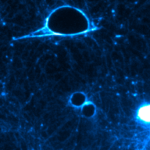Toxins 2019
Received: 24 May 2019 / Accepted: 5 September 2019 / Published: 12 September 2019
Abstract
:
Botulinum neurotoxin (BoNT) is produced by the anaerobic, Gram-positive bacterium Clostridium botulinum. As one of the most poisonous toxins known and a potential bioterrosism agent, BoNT is characterized by a complex mode of action comprising: internalization, translocation and proteolytic cleavage of a substrate, which inhibits synaptic exocytotic transmitter release at neuro-muscular nerve endings leading to peripheral neuroparalysis of the skeletal and autonomic nervous systems. There are seven major serologically distinct toxinotypes (A–G) of BoNT which act on different substrates. Human botulism is generally caused by BoNT/A, B and E. Due to its extreme lethality and potential use as biological weapon, botulism remains a global public health concern. Vaccination against BoNT, although an effective strategy, remains undesirable due to the growing expectation around therapeutic use of BoNTs in various pathological conditions. This review focuses on the current approaches for botulism control by immunotherapy, highlighting the future challenges while the molecular underpinnings among subtypes variants and BoNT sequences found in non-clostridial species remain to be elucidated.
Keywords:
botulinum neurotoxins (BoNTs); antitoxin; antibodies; vaccines; BoNT variants
Key Contribution: Botulism is a severe disease that could result from bioterrorism attack. The only specific treatment and prevention are based on neutralizing antibodies and vaccination, respectively, that are the focusof this review.
